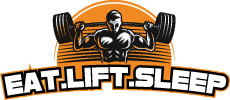If you’re looking to maximize your time at the gym, HIIT (high-intensity interval training) might just be the way to go.
But how long should a HIIT workout be to ensure you’re reaping all the benefits?
In this blog post, we’ll break down the ideal length for a HIIT workout and provide some tips on how to get the most out of it.
Get ready to sweat!

Introduction to HIIT
High-Intensity Interval Training, or HIIT, has recently gained popularity as an effective and efficient workout routine.
HIIT involves alternating high-intensity exercise periods with rest or low-intensity activity.
These intervals can be adapted to suit any fitness level and can range from 6 seconds to several minutes long.
HIIT aims to increase heart rate, burn calories, and improve overall fitness. In this blog, we will explore the ideal length of a HIIT workout and strategies for creating effective sessions that match your fitness goals while avoiding overuse injuries.
By understanding the basics of HIIT, you can implement this dynamic training technique into your routine and significantly improve your fitness levels.
Understanding High-Intensity Interval Training (HIIT)
Understanding High-Intensity Interval Training (HIIT) is crucial to achieving the best results in your workout routine.
HIIT involves short bursts of intense exercise followed by periods of rest or low-intensity exercise.
The goal is to push your body to its limits during the high-intensity portions, making it a highly effective form of training.
Typically lasting between 15-30 minutes, HIIT workouts can be tailored to your fitness goals, whether it be improving endurance, building strength or burning fat.
It is essential to warm up and cool down adequately to prevent injury, and to gradually build up intensity to avoid overuse injuries.
By understanding the concepts of HIIT, individuals can create effective workout routines that suit their fitness needs while achieving optimal results.
The Ideal Length of a HIIT Workout
After understanding what HIIT is and how it works, knowing the perfect length for your HIIT workouts is essential.
According to research, the ideal length for a HIIT session, like what’s taught in the Twenty minute Body, is usually around 20 minutes.
Anything beyond that can imply that you’re not working hard enough or that you’re doing too much, leading to overuse injuries.
However, depending on your fitness goals, you can create an effective HIIT session that lasts between 4 to 15 minutes.
Warm-up and cool-down are crucial before and after the high-intensity intervals to prevent injuries and reduce muscle soreness.
Additionally, exercises should be performed for 30 seconds with 10 seconds of rest in between.
LES MILLS GRIT and other HIIT workout programs incorporate all of these factors into carefully crafted sessions to provide maximum fitness gains.
Ultimately, the perfect length of your HIIT workout depends on your goals and preferences.
HIIT Intervals Duration Range
Based on the National Academy of Sports Medicine (NASM), high-intensity interval training (HIIT) can be effective with intervals lasting as few as six seconds and not exceeding 10 minutes.
However, most HIIT workouts commonly range from 10 to over 30 minutes with each exercise usually performed for 20-30 seconds or up to 90 seconds.
The sweet spot for an ideal HIIT session is between 20 to 30 minutes, ensuring that the body receives adequate rest and recovery time.
It’s essential to match your HIIT session to your fitness goals, starting with shorter intervals and gradually building up the duration to avoid overuse injuries.
Additionally, warming up and cooling down are key components in creating an effective HIIT session.
Ultimately, you can reap the benefits of this time-efficient and intense workout regime by finding your ideal HIIT session length.
The Importance of Warm-Up and Cool-Down
The Importance of Warm-Up and Cool-Down in a HIIT workout cannot be overstated.
A warm-up session of 5-10 minutes of dynamic stretching and light cardio exercises is crucial to prepare the body for the high-intensity workout.
The warm-up helps increase the heart rate, loosens up the muscles and joints, and mentally prepares the individual for the session ahead.
Cooling down is similar to warming up; it helps gradually bring the heart rate and breathing back to normal levels, and prevent blood from pooling in the muscles, reducing the risk of injury.
Adequate stretching during the cool-down session can also help muscles recover faster and reduce soreness in the following day.
Skipping these sessions might cause sudden stress to the body and could make someone more prone to overuse injuries.
Thus, it is recommended to include warm-up and cool-down sessions in every HIIT workout.
Matching Your Fitness Goals
Matching your fitness goals is essential when it comes to implementing a successful HIIT routine.
Your goals can determine the duration of your HIIT workout, intensity, and frequency.
A shorter workout duration may be more beneficial for individuals looking to achieve optimal health and recovery.
In contrast, those aspiring to build endurance or see faster results may require longer intervals.
It’s important to prioritize both warm-up and cool-down periods to prevent injuries and maximize the effects of your HIIT routine.
By matching your fitness goals to the duration and intensity of your HIIT workouts, you can effectively achieve your desired results while minimizing the risk of overuse injuries.
Avoiding Overuse Injuries
When engaging in high-intensity interval training (HIIT), one important facto is the risk of overuse injuries.
To avoid such injuries, it’s essential to have variety in your workout routine and not to push yourself to the limit every single day.
Rest days are also crucial, so your muscles have time to recover. Including strength training within your workout routine can help strengthen the muscles you use during HIIT sessions, reducing the likelihood of injury.
Additionally, it’s recommended that HIIT workouts are spread out throughout the week rather than doing them every day.
By following these precautions, individuals can minimize the risk of overusing their muscles and injuring themselves during HIIT workouts.
Creating an Effective HIIT Session
Creating an effective HIIT session is key to maximizing the benefits of this challenging workout trend.
To make the most out of a HIIT workout, one should focus on varying the exercises during the high-intensity portion of the session and allowing for adequate recovery during the rest intervals.
It is also important to start the session with a proper warm-up and end with a cool down to prevent injury and reduce muscle soreness.
In addition, selecting exercises that are tailored to one’s fitness goals is crucial for achieving the desired results.
With careful planning and attention to detail, a HIIT session can be a demanding yet rewarding experience that offers numerous health benefits.
Easing into HIIT
Easing into HIIT is essential for beginners to prevent overuse injuries and to build up their endurance.
It is recommended to start with 15-20 minutes of a HIIT workout, gradually increasing the duration based on their fitness level.
It’s also recommended to start with either equal work/rest intervals or shorter work intervals and longer rest periods.
As the body becomes conditioned and physically fit, adding one HIIT workout to their weekly routine, in place of another high-intensity workout, like the elliptical, can be beneficial.
Always warm up and cool down for at least five minutes before and after the HIIT workout.
By easing into HIIT, one can safely and effectively achieve their fitness goals with lower risks of injury.
The Bottom Line: Finding Your Ideal HIIT Session Length
The bottom line when it comes to finding your ideal HIIT session length is that it should be between 20 and 30 minutes.
This is the sweet spot, where you can work hard enough to get the benefits of HIIT without risking overtraining or injury.
Remember that true HIIT involves short bursts of 10-15 seconds, followed by longer rest periods.
Use a work-to-recovery ratio of 1-to-4 and gradually progress to a ratio of 4-to-1 for maximum effectiveness.
It’s also essential to warm up and cool-down properly and to match your fitness goals with your HIIT session.
Don’t push yourself too hard too soon, and be mindful of avoiding overuse injuries.
By creating an effective and well-rounded HIIT session, you can achieve your fitness goals and improve your overall health and well-being.
How Can Fitness Trackers Help Me Monitor My HIIT Workout Timing?
Fitness trackers with smart cardio health tracking capabilities can prove to be incredibly useful when it comes to monitoring HIIT workout timing. These advanced devices allow you to keep a close eye on your heart rate, duration, and intervals during high-intensity training sessions. By accurately tracking your workout metrics, you can effectively measure your progress and make necessary adjustments to optimize your HIIT routine.
Conclusion
In conclusion, the length of a HIIT workout depends on the individual’s fitness goals and ability to perform at high intensity.
While research suggests that the sweet spot for a HIIT session is around 20-30 minutes, it is important to avoid overuse injuries and ease into the workouts.
Matching the interval duration, warm-up and cool-down and creating a practical session is crucial to getting the most out of a HIIT workout.
Whether the goal is to improve cardiovascular fitness or lose fat, HIIT can offer equal or superior benefits compared to traditional cardio workouts.
Ultimately, finding the ideal length of a HIIT session requires experimentation and listening to one’s body.
With proper guidance and consistency, HIIT can be a highly effective workout option for a range of fitness goals.






Leave a Reply